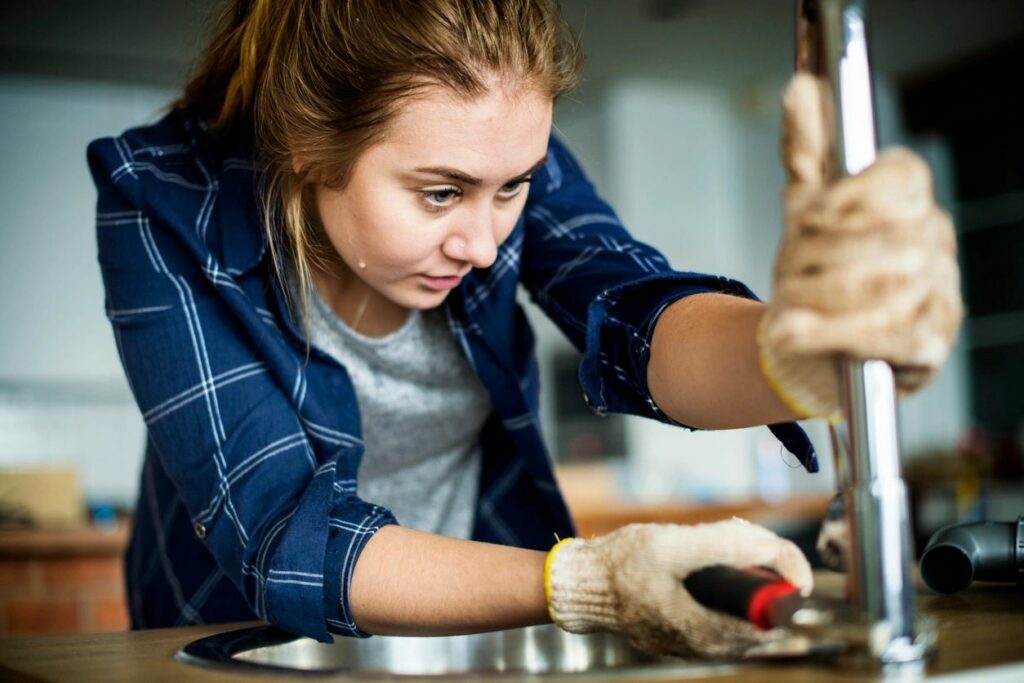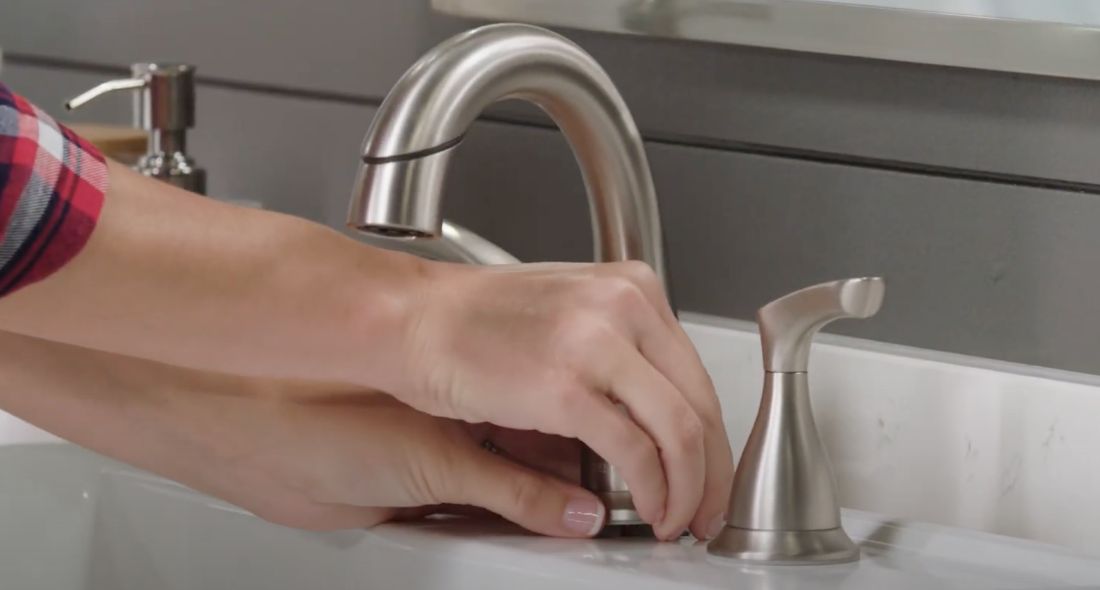Exploring the Value of Resolving a Faulty Faucet
Exploring the Value of Resolving a Faulty Faucet
Blog Article
We have stumbled upon this article about Water Dripping from Faucet: Why and How to Fix listed below on the web and figured it made perfect sense to quickly share it with you on this page.

Dripping taps might feel like a small trouble, however their influence exceeds simply the aggravation of the audio. From drainage to incurring unnecessary financial prices and wellness threats, disregarding a dripping tap can result in numerous consequences. In this post, we'll delve into why it's crucial to resolve this typical home issue quickly and efficiently.
Wastefulness of Water
Ecological Influence
Leaking faucets contribute considerably to water waste. According to the Environmental Protection Agency (EPA), a solitary faucet leaking at one drip per secondly can throw away more than 3,000 gallons of water each year. This not just stress water resources yet likewise impacts environments and wildlife dependent on them.
Financial Costs
Boosted Water Bills
Past the environmental effect, leaking faucets can blow up water bills substantially. The gathered waste with time translates right into greater energy expenses, which could have been avoided with prompt fixings.
Prospective Property Damages
Furthermore, prolonged trickling can lead to harm to components and surface areas surrounding the faucet. Water build-up can create discoloration, deterioration, and even structural issues if left unattended, resulting in additional repair work expenses.
Health and wellness Worries
Mold and Mold Growth
The constant existence of moisture from a trickling tap develops an excellent environment for mold and mildew growth. These fungi not just endanger interior air quality but also pose health risks, specifically for individuals with respiratory conditions or allergies.
Waterborne Conditions
Stationary water in trickling faucets can end up being a breeding ground for bacteria and other virus, raising the risk of waterborne diseases. Impurities such as Legionella microorganisms thrive in stagnant water, potentially leading to major ailments when consumed or breathed in.
Do it yourself vs. Professional Repair work
Benefits and drawbacks of Do It Yourself Repair Service
While some might try to take care of a leaking tap themselves, do it yourself fixings include their own collection of difficulties. Without correct knowledge and tools, do it yourself efforts can intensify the problem or bring about incomplete repairs, prolonging the problem.
Benefits of Employing a Specialist Plumber
Hiring a specialist plumber makes certain that the underlying source of the dripping tap is addressed effectively. Plumbers have the know-how and tools to diagnose and fix faucet problems successfully, conserving time and minimizing the risk of further damage.
Step-by-Step Guide to Taking Care Of a Dripping Tap
Devices Called for
Prior to trying to fix a trickling faucet, gather the required tools, including a flexible wrench, screwdrivers, replacement components (such as washers or cartridges), and plumber's tape.
Typical Tap Issues and Their Solutions
Recognize the kind of tap and the certain problem triggering the drip. Usual issues include worn-out washers, rusty shutoff seats, or defective O-rings. Describe manufacturer instructions or on the internet tutorials for detailed guidance on repair work.
Safety nets
Regular Maintenance Tips
To avoid dripping faucets, perform regular upkeep such as cleansing aerators, evaluating for leaks, and changing worn-out parts immediately. Additionally, consider mounting water-saving tools or updating to more efficient fixtures.
Significance of Prompt Repairs
Dealing with trickling taps as soon as they're noticed avoids further water waste and prospective damages, ultimately saving both water and cash over time.
Effect On Property Value
Understanding of Well-Maintained Home
Maintaining a residential property in good condition, including addressing maintenance problems like dripping taps, boosts its perceived value and desirability among possible purchasers or renters.
Impact on Resale Value
Characteristics with well-kept plumbing fixtures, including taps, command greater resale values in the real estate market. Dealing with dripping taps can contribute to a favorable perception throughout building evaluations and settlements.
Ecological Responsibility
Individual Payment to Preservation
Taking obligation for taking care of trickling taps lines up with broader initiatives towards water preservation and ecological sustainability. Every individual's actions jointly make a substantial impact on maintaining valuable resources.
Lasting Living Practices
By prioritizing prompt fixings and embracing water-saving habits, people add to lasting living practices that benefit both existing and future generations.
Final thought
Attending to a leaking faucet exceeds simple convenience; it's an essential action toward preserving water, reducing monetary prices, and guarding health and home. Whether via DIY repair services or specialist help, taking action to take care of leaking taps is a tiny yet impactful means to advertise responsible stewardship of resources and contribute to a healthier, more sustainable future.
How to Fix a Leaky Faucet: Step-by-Step Repair Guide
A leaky faucet may seem like a simple annoyance, but if it's not fixed promptly, that leak could cost hundreds to potentially thousands. From water damage to mold, mildew, and high water bills, even a tiny leak can be catastrophic if left unattended. Damage like this can even affect the overall value of your home, so it's important to take the right approach for leaky faucet repair. You may need the help of a plumber in some cases, but we've got a few tips you can try on how to fix a leaky faucet before calling the pros.
Four Faucet Types
When you're learning how to fix a leaky faucet, the first step is knowing what kind of faucet you're working with! There are four common types.
Cartridge Faucets
Cartridge faucets come in one- or two-handled varieties. In one-handled cartridge faucets, hot and cold water combines in a single cartridge. In the two-handled versions, hot and cold water are controlled separately and mixed in the faucet.
Ball Faucets
Ball faucets have a single lever you push up and down to adjust the pressure and rotate to change the temperature. A slotted metal ball controls the amount of water allowed into the spout.
Compression Washer Faucets
They're the oldest type of faucet, but they're still used in many homes — especially older ones. Compression faucets have two separate handles that, when turned, raise or lower the washer that seals a water valve. This valve stops water from flowing through the faucet when it is turned off.
Disc Faucets
Disc faucets rarely need to be repaired due to their maintenance-free design. The water flow is controlled by two discs — the upper one raises and lowers against a fixed lower disc, creating a watertight seal. If your disc faucet starts leaking, you may need to replace the seals or clean residue buildup from the inlets.
Fixing a Leaky Faucet
Step 1: Turn Off the Water
Whether you're learning how to fix a leaky bathtub faucet or how to fix a leaky kitchen faucet, always turn off the water supply to your working area when you're fixing a leak. The last thing you want is a flood added to your list of things to fix.
Look for the shutoff valves below your sink or around the tub and turn them clockwise to stop the water flow. If your faucet doesn't have shutoff valves, you may need to turn off the water for the whole house. Check to make sure it's off by turning the faucet on. If nothing comes out, you're ready to start the repair.
Step 2: Take Apart the Faucet
How you disassemble your faucet depends on the type of fixture you have. You can use a flathead screwdriver to remove the caps on top of the handle or handles for cartridge and compression faucets. Inside, you should see handle screws. Unscrew these with a screwdriver to remove the handle.
Disc- and ball-style faucets will typically have an inlet screw near the handle, and removing that will reveal the interior of the faucet.
Detach the Valve Stem
For cartridge- and compression-style faucets, you'll see the inner valve stem or cartridge once you remove the faucet handles. If you have a compression faucet, unscrew the brass valve stem. If you have a cartridge faucet, pull out the cartridge. If your cartridge has been in place for a while, it may require some tools or extra force to remove it due to mineral deposits.
Examine and Replace Parts
Once you've removed the parts, check them out to confirm what needs to be replaced. You may see corroded rubber washers, O-rings, stems, or cartridges. On a ball-style faucet, check the seats and springs for damage.
If you need to repair a leaky disc faucet, check the inlet and seals on the lower disc.
Once you determine what parts must be replaced, visit your local hardware store. Bring the damaged parts with you to ensure you can purchase the correct components to replace them.
Clean Valves and Faucet Cavity
If you've removed a stem or cartridge, you may notice mineral buildup in the faucet's threads. Use white vinegar to clean the valve seat by soaking it for a few minutes, then scrub it away with a soft toothbrush and rinse with warm water. You can also clean the interior of the faucet in the same way.
Reassemble the Faucet
Once your faucet is cleaned and the required parts have been replaced, it's time to reassemble it. Put the pieces back together and slowly turn the water supply back on. Doing this slowly is crucial because too much initial water pressure can damage the new hardware you've just installed.
https://homewarranty.firstam.com/blog/how-to-fix-leaky-faucet

I was made aware of that report about Why It's Important to Fix Leaky Faucets through an associate on another domain. Sharing is caring. You never know, you may just be doing someone a favor. We love reading our article about What Causes Leaky Faucets & How To Fix Them.
Report this page